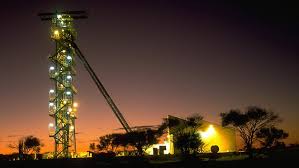Published on Wednesday May 22 2013 (AEST)

The evolution of uranium policy has been fully in that direction since 2007. Embedding uranium exports into regional relationship-building is a clear signal that Australia's uranium policy has taken an irreversible turn for the better. It seems very unlikely that a future national government would curtail domestic uranium expansion, souring the regional relationships that consecutive governments have built, partly on the basis of uranium exports.
State political parties are being elected on pro-uranium platforms. Their opponents with anti-uranium platforms are not winning elections.
Uranium appears to lack political salience for voters. Political parties usually learn from such demonstration effects. Accordingly, the likely future course of Australia's uranium policy will be a better alignment of state-level political attitudes with the national consensus in favour of expanding uranium production and exports.
There are reasons for this shift towards normalisation.
First, the uranium industry has a very good record of radiation protection (we always come in well below the limits for radiation exposure) and environmental performance, as industry regulators attest every year.
The industry can meet the most challenging tests of environmental assessment. Commonwealth environment ministers have approved four uranium projects since 2008 on grounds including that the projects will operate according to world best practice and pose no credible threat to the environment. Eleven thousand shipping containers of uranium have been transported within Australia over 30 years with no incidents affecting the public.
Second, the industry makes a modest but valuable contribution to Australian prosperity. Uranium exports are worth $600-$700 million annually, which makes us a middle-sized export industry about the same in value as computers, paper and cheese. We employ about 3500 people. This economic contribution will grow as a direct consequence of the normalisation of the industry. While the industry faces challenging economic circumstances, government forecasters expect the uranium spot price to rise by 75% by 2018.

The world's demand for uranium will exceed supply by then.
By the 2030s, the capacity of the world's nuclear industry is forecast to expand by between 25% and 100%. Australia, with the world's largest endowment of uranium, is well placed to contribute to the supply of uranium required by that expansion, provided we become competitive enough. Measured by energy value, Australia's uranium industry is second only to coal in importance: Australia's uranium exports account for 20% of the energy value of the country's energy production.
The third reason for change is that the negotiation of new export treaties has demonstrated to a wider audience that Australia's uranium is exported under strict safeguards and has only ever been used only for peaceful purposes. Australia's nuclear safeguards organisation reports this finding to parliament every year.
Australia's treaty negotiators also take nuclear safety into account when negotiating treaties.
Fourth, our exports of uranium allow a dozen countries to produce electricity with no greenhouse emissions and without pollution.
The current state of uranium politics in a long way from 2007, when uranium development was banned in all but South Australia and the Northern Territory and when there was no uranium consensus between the two main national political parties. Now, there is broad-based Commonwealth and state political support for the industry's expansion. Now, uranium development is possible in some form in every state except Victoria. Western Australia, Queensland and New South Wales have all changed policies and changed laws.
Nationally, the ALP and the Coalition both support uranium development. Both have supported the making of new treaties for exports to China, Russia and the UAE. Prime Minister Julia Gillard championed a change in her party's and her government's policy on exports to India and initiated negotiations for a treaty which is expected to reflect the condition of all the other treaties Australia has made for uranium exports: that Australia's uranium will only be used for peaceful purposes.
The Opposition supports a treaty with India.
Much has been done to reform Australian policy. Some work remains. But there is little doubt that the continuing evolution of uranium policy is towards normalisation.
.
Click Image To Access Uranium Stocks Australia
.